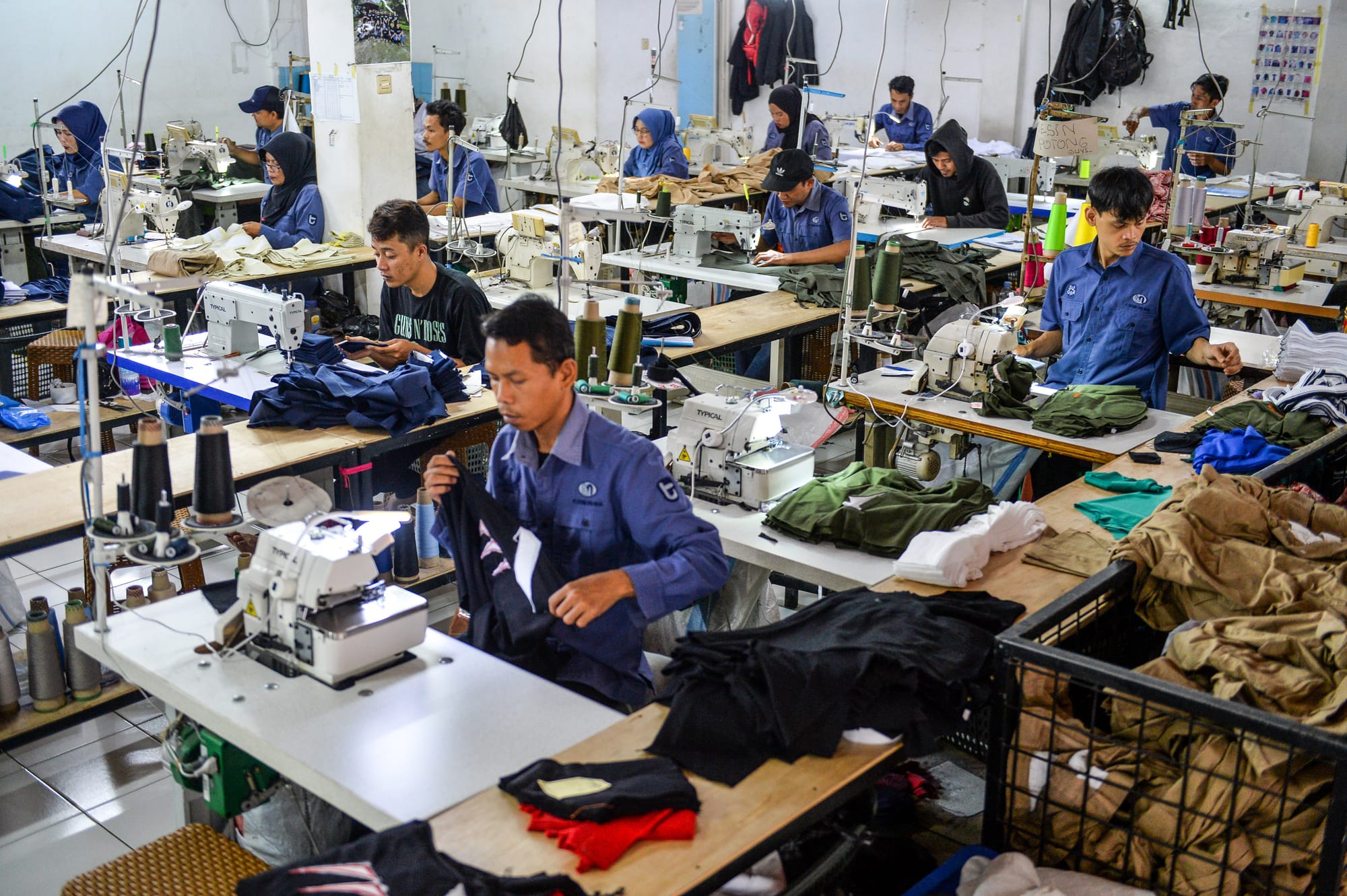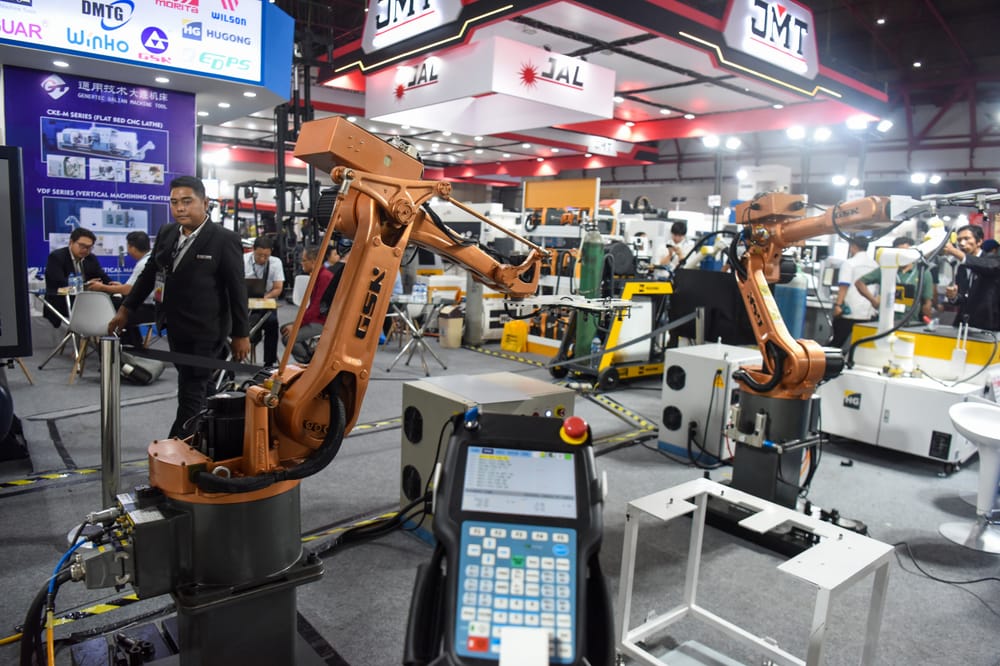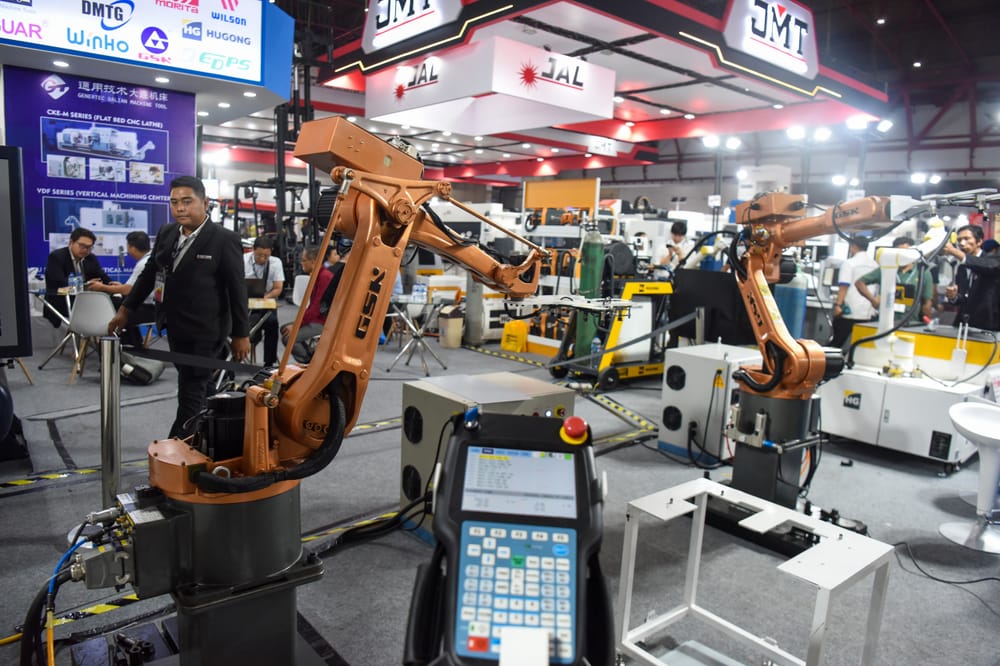S&P Global released the Indonesia Manufacturing Purchasing Managers Index (PMI) on Monday (3/11/2025), which rose to 51.2 in October 2025 from 50.4 in the previous month. A figure above 50 indicates expansion, while below 50 indicates the opposite.
Meanwhile, a number of experts said that the increase was mainly driven by the growth of new orders, which rose at the fastest rate since last March.
Minister of Industry Agus Gumiwang Kartasasmita said that this PMI expansion indicates a positive signal for the Indonesian manufacturing sector in the early fourth quarter of 2025. This achievement marks three consecutive months of manufacturing expansion, which indicates the stability of the national industry's growth momentum amidst global economic pressures.
Based on the components forming the PMI, new orders rose from 51.7 to 52.3. Meanwhile, the level of employment increased from 50.7 to 51.3. According to Agus, this increase reflects increasing market confidence and national industrial production capacity.
"We are seeing an increase in employment at the fastest rate since May 2025. This is a good signal because industrial activity is again encouraging job creation," said Agus through a press release received by SUAR in Jakarta (3/11).
Meanwhile, output or production activity remained stable at level 50, indicating that industry players are still maintaining a balance between production capacity and market demand. Some industry players reportedly used existing stock to meet the increase in new orders, so that stocks of finished goods decreased slightly.
Agus highlighted that the expansion of Indonesian manufacturing was driven by strong domestic demand amidst challenges from global market dynamics. "Although exports are still slowing due to weakening demand in major markets such as the United States and Europe, the strength of domestic consumption is the main driver of industrial growth," said Agus.
S&P Global noted that input price inflation reached its highest level in the last eight months due to rising raw material prices. However, the increase in selling prices by producers is still limited. According to Agus, this shows that industry players are maintaining the price competitiveness of domestic products to remain competitive, while also holding back inflation at the consumer level.
In a regional context, the ASEAN manufacturing PMI also increased to a level of 51.6 in October 2025. Indonesia (51.2) is still in the expansion zone together with Thailand (56.6), Vietnam (54.5), and Myanmar (53.1). Several major world countries, such as China (51.2) and India (57.7) showed limited expansion, indicating the stability of global manufacturing activity.
Domestic demand
Economist at S&P Global Market Intelligence, Usamah Bhatti, said that this surge came from domestic demand, while export demand actually decreased for two consecutive months due to the weak global market.
"The improvement in the condition of the Indonesian manufacturing sector is increasingly strengthening in the early fourth quarter of 2025, providing a positive outlook in the coming months," he said in his statement received by SUAR in Jakarta (3/11).
He added that increased sales drove increases in employment and purchasing activity, although production volumes still tend to be flat.
The performance of the labor market also improved, where the number of workers increased for three consecutive months, and in October recorded the fastest rate in the last five months.
Some producers increased capacity to compensate for new demand, while others used existing stock to fulfill orders, causing inventories of finished goods to decline slightly.
However, production cost pressures increased sharply. The rate of input price inflation reached its highest level in the last eight months, mainly due to rising raw material prices.
However, many companies choose to increase selling prices to a limited extent in order to maintain competitiveness in the market.
"Purchasing activity also grew moderately for three consecutive months. Several manufacturers increased their raw material inventories to anticipate higher production needs," he said.
Business input
Meanwhile, Executive Director of the Institute for Development of Economics and Finance (Indef), Esther Sri Astuti, said that the manufacturing index will improve if the government accepts input from the business world regarding which policies need to be improved to support business continuity.
The business world runs manufacturing and needs support from the government in the form of policies.
"To improve the manufacturing index in the future, input from the business world is needed, so that we can collaborate," he told SUAR in Jakarta (3/11).
Chairman of the Indonesian Exporters Association (GPEI), Benny Soetrisno, said that the manufacturing index released by S&P Global can be used as input and a reference to encourage better manufacturing performance in the future.
The October 2025 manufacturing index, which is at a level of 51.2, illustrates that the manufacturing industry continues to expand, even though it is faced with uncertain global economic conditions.
"Business actors continue to run their businesses and are still waiting for policies from the government to encourage a sustainable business world," he told SUAR in Jakarta (3/11).
Benny said that in addition to government policies, other factors that drive the growth of the manufacturing industry are operational efficiency, quality human resources and the availability of capital.
IKI is still in the expansion zone
Meanwhile, last weekend, the Ministry of Industry (Kemenperin) noted that the Industrial Confidence Index (IKI) for October 2025 was still moving in the expansion zone. The Kemenperin survey released that the IKI for October 2025 was at a level of 53.50.
The October IKI value increased by 0.48 points compared to September 2025, which was 53.02. Meanwhile, the October 2025 IKI showed an increase of 0.75 points compared to the October 2024 IKI, which at that time was at a level of 52.75.
Ministry of Industry Spokesperson Febri Hendri Antoni Arief said that the increase in the IKI for October 2025 was supported by the performance of manufacturing industries that are domestically and export-oriented.
"Orders are increasing, but production is still contracting. The industry is fulfilling orders by still using existing stock in warehouses," said Febri in a release received by SUAR in Jakarta (31/10/2025).
Read also:

Overall, Febri explained that the increase in the IKI for October 2025 was driven by almost all manufacturing industry sub-sectors. Of the 23 sub-sectors analyzed by Kemenperin, 22 sub-sectors experienced expansion, with a contribution of 98.8% to the Gross Domestic Product (GDP) of the non-oil and gas processing industry per quarter II-2025.
The sub-sectors with the highest IKI values are the Tobacco Processing Industry (KBLI 12) and the Paper and Paper Goods Industry (KBLI 17). Meanwhile, only one sub-sector experienced contraction in October 2025, namely the Textile Industry.

The biggest support
In response to this, Chairwoman of the Indonesian Garment and Textile Association (AGTI), Anne Patricia Sutanto, said that the TPT industry is still the largest industry and supports the Indonesian economy. In addition, the TPT industry is a major contributor to Indonesia's non-oil and gas exports with a value of US$ 11.9 billion in 2024.
Entering 2025, market conditions are not conducive; domestically, imported products are increasingly flooding the market, while foreign markets are experiencing fluctuations.
"The TPT industry is not weakening but adapting to market conditions; what we are doing is energy efficiency, digitalization and sustainability," she told SUAR, in Jakarta (31/10/2025).
Apart from being export-oriented, TPT is also an important support for the regional economy by absorbing millions of workers, especially in Central Java, West Java and East Java. Therefore, business people consider the importance of government policy support that is balanced between protecting domestic industry and opening up global markets.
Anne said that with increased competitiveness in terms of human resources, technology, energy and supply chains, the textile industry is able to withstand any threat.
She assessed that the narrative that portrays the Indonesian textile industry as if it is unable to compete globally does not fully reflect the reality on the ground. Many national garment companies have in fact become key partners for well-known global brands and meet strict international standards.
With the right fiscal and industrial policy support, business people are confident that the Indonesian TPT sector can become a (green growth) growth engine that encourages sustainable exports and strengthens Indonesia's position in the supply chain and improves local and global competitiveness.
In agreement with Anne, Executive Director of the Indonesian Textile Association (API), Danang Girindrawardana, said that the TPT industry is a labor-intensive industry that is part of the national strategic interest for economic growth and job creation as per President Prabowo's vision.
“The textile industry must be able to pioneer modern technology to increase its capacity and quality, and be able to protect its businesses and workforce,” he told SUAR in Jakarta (31/10).
The growth of Indonesia's textile industry is increasingly positive, reaching 5.39% by the end of 2024 until the second quarter of 2025, contributing 0.98% to GDP, involving 3.76 million workers, which means 19.18% of the total manufacturing workforce. Meanwhile, export capacity increased to US$8.07 billion in Jan-Aug 2025.







